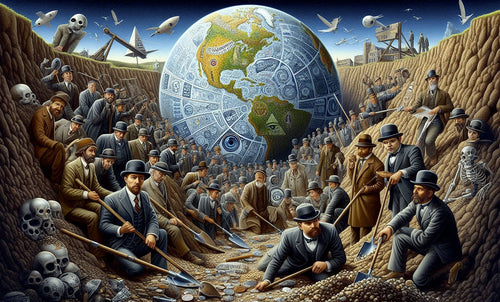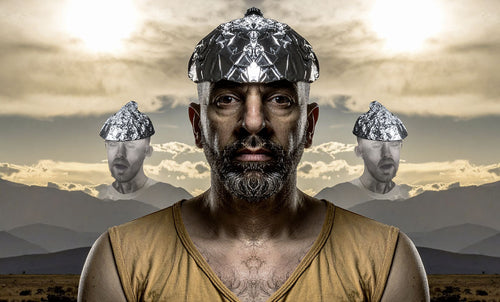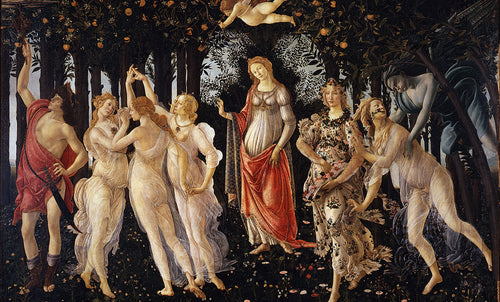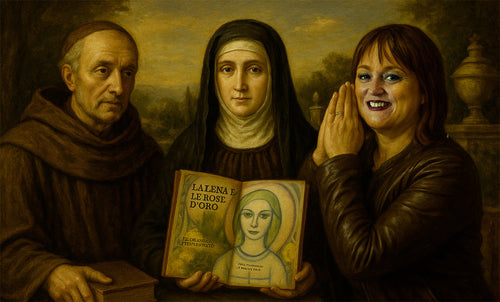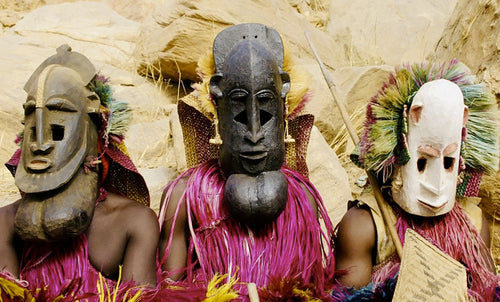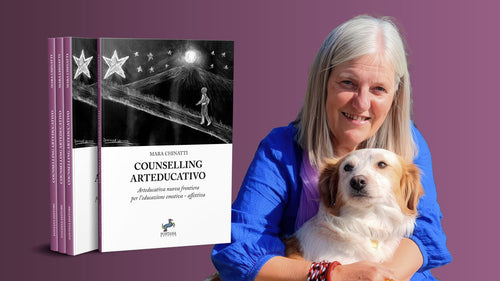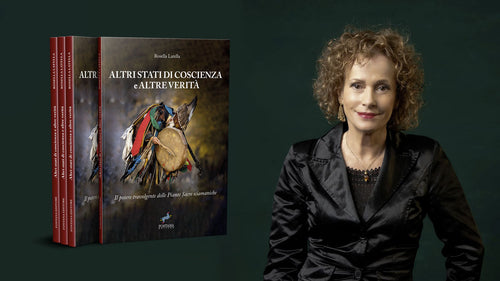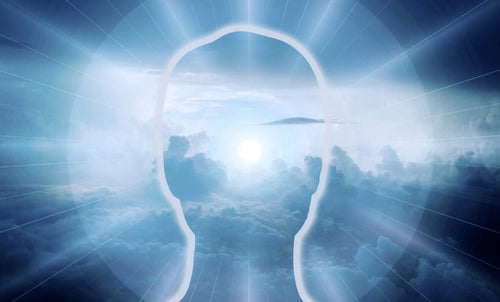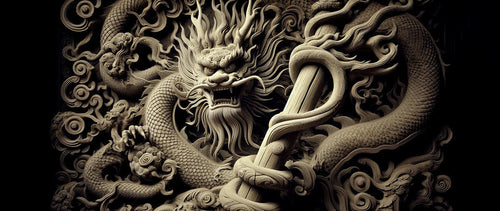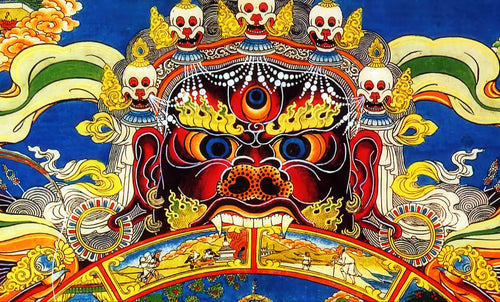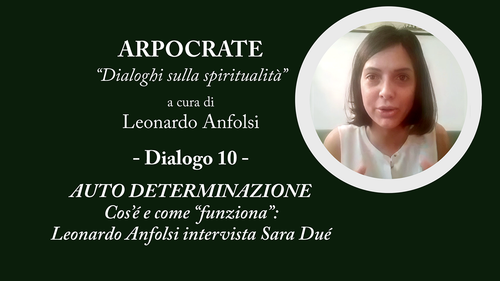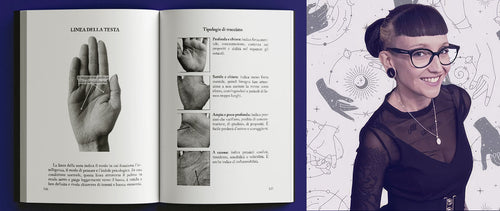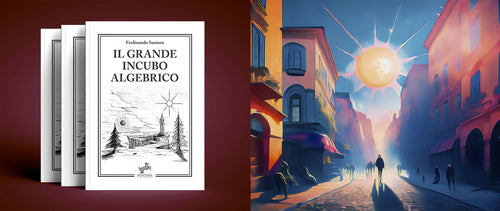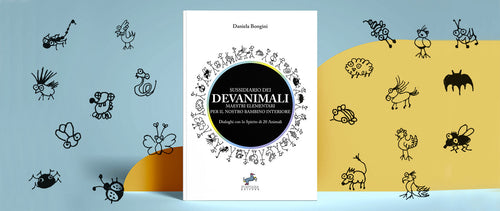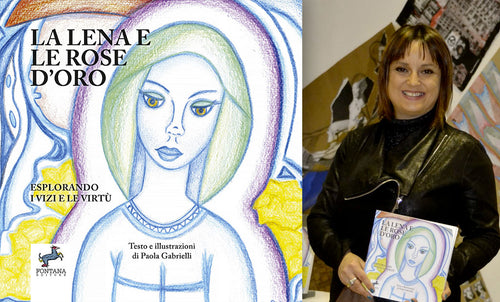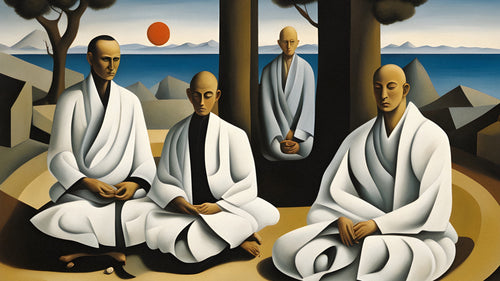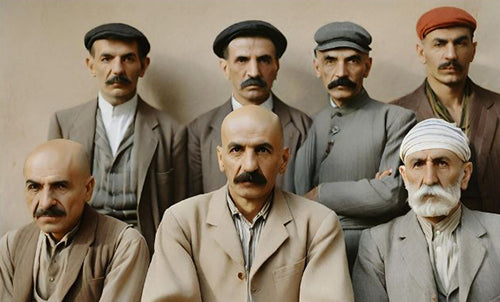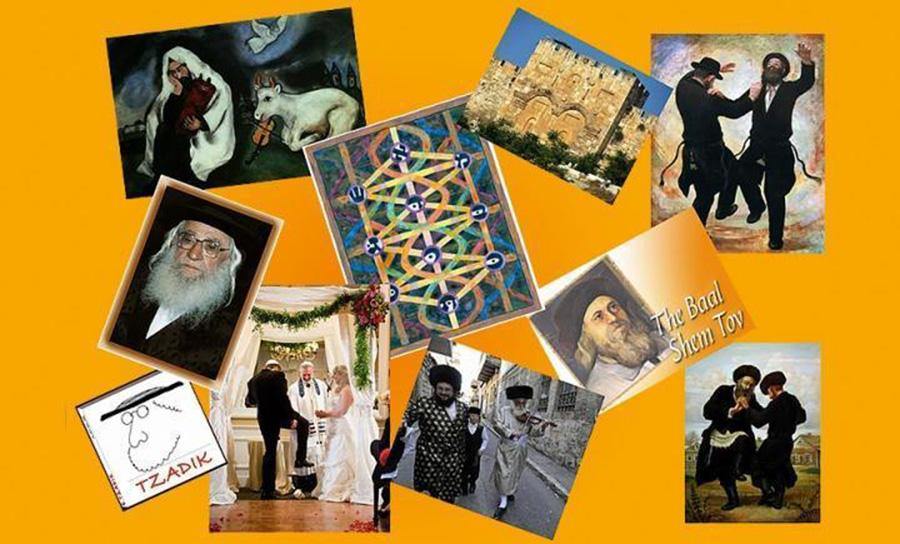
Jewish Kabbalah and the Epicurus Paradox - part 5
Fabrizio PiolaPerhaps only Sufis perceive the Creator in this absolute and engaging way, both mentally and emotionally, as well as physically. Sufis and Hasidim in fact dance their joy and their faith and through the ecstatic movement of the body and the contemplative mind they explore the dimensions through which the Light lives and spreads.
Hasidism (Hebrew: חסידות , hasidut, similar to the Latin "pietas", "loving kindness", the root is the same as the name of the sephirah Ḥesed ), is a religious current, both historical and contemporary in Judaism, particularly devoted to Kabbalistic studies. It was born as a movement of spiritual rebirth marked by intense spontaneity, joyful and absolute faith and great commitment to the accomplishment of good works. In a certain sense, it presents itself as a balance that stands “in counterweight” to a way of living Orthodoxy characterised by intellectualism, by continuous and exhausting study, by the halachic rigorism that we could say characterised European Ashkenazi Judaism up until then, the symbol of which was the towering figure of Rabbi Eliyahu ben Shlomo Zalman , better known as the Gaon of Vilna [now Vilnius in Lithuania], called the GR”A.
The cradle where Hasidism grew and grew is the agricultural and artisan world of the small Shtetls (Jewish villages) of Western Ukraine, where a vigorous “Yiddish” culture survived and developed amidst government persecutions and Cossack pogroms. The central spiritual figure and absolute model of the Hasidim is Rabbi Yisroel Ben Eliazer , known as the Baal Shem Tov (Lord of the Good Name), an extraordinary Righteous Man or “Tzadik” of popular extraction, whose figure towers over 18th-century Judaism and who appears as the protagonist in dozens and dozens of spiritual anecdotes and edifying stories.
Today the Hasidim are part of the Orthodox Jewish world and also the Ultra-Orthodox world called “Haredi” (literally from “Irah” = Fear of Gd “The Fearful” as well as “The Fearful”). Their galaxy includes rather well-known and visible groups, such as the Lubavitchevs and the ChaBaD. Within Judaism itself, the Hasidim culture has given rise to problems of coexistence – especially within the State of Israel – where secularizing religious people and lay people strongly criticize their positions of contrast between their world and the outside world. In some ways, the Hasidic world chose to remain anchored in the 18th century, not only in its objectively anachronistic clothing, but above all in its often extreme conservatism, in its rejection of the media and any form of communication not expressly approved and controlled, in its tendency towards isolation and self-ghettoization of some fringes, in its contradictions such as its refusal and exemption from military service, its refusal to recognize Israel as the national state of the Jews, its hostility towards the army and the police, towards anyone who, as a stranger, passes through their areas of residence, the imposition on their neighbors of their own standards in terms of observance of halacha - for example of Shabbat and tzeniut or modesty in women's clothing - but at the same time the receipt of state subsidies. Many recent medical studies confirm the problems of this antagonistic lifestyle choice by demonstrating how the percentage of sufferers from neurosis and obsessive-compulsive behavior is significantly higher in the Haredi-Hassid world than in the rest of the Israelite population, sometimes already at a very young age and as a result of a form of education of Orthodox youth that secularists define as seriously self-referential.
But what interests us here and now is the traditional choice of Hasidism to base their form of religiosity on Lurianic Kabbalah, which they themselves have popularized in the Gentile world over the last 30 years. For this form of Kabbalah has dealt with and solved the Problem of Evil like no other has done before.
The sensitivity of the Ḥassidim is strongly directed to the perception of the Immanent Presence of Gd in the World and in the entire Universe, where it is evident that Evil is also present. Therefore, the Neoplatonic-Gnostic separation is not accepted here, by virtue of which, this world is the Kingdom of Evil, while far away and separate, in the highest of the Heavens, there is the Celestial Jerusalem. On the contrary, for the Ḥassidim, Gd and Evil are present on the same stage BUT THEY ARE NOT AT THE SAME LEVEL.
The Hasidim believe that the relationship between Man and Gd is characterized, in its purest essence, by the inseparable relationship between the One who has the immense need and desire to receive (us) and the One who has the absolute and infinite propensity to give unlimitedly and unconditionally (HaShem). Laitman’s readers should keep in mind that this is the meaning of the favorite expression among the Bnei Baruch: “wish to bestow meets the wish to receive.”
Here then, in the Ḥassidim, the problem of Evil, here understood in the sense of moral wickedness to which human beings give form through impure actions dictated by the continuous desire for the Ego (which is the negative dimension, that of separation from the Creator, while Union with Him and in Him is the Natural State of Man and of all Creation) rather than the work of a hypothetical evil entity, created in itself, is the Problem OF REMEDYING AN ABSENCE OF LIGHT.
Wherever Light is allowed to enter, Evil is absent or rendered harmless. Where there is an absence of Light, there the monsters of the ego and the sufferings that afflict us all are generated. Evil from its dark corner of the Universe from a potential dimension becomes material reality through the transgressive action of Man.
The latter, once you begin to move in the world regardless of the presence of the Light or rejecting it, continually throws mud on the face of Creation and disfigures the Kingdom of Malkhut, a World that is also a sephirah containing the totality of the Divine filtered through the space-time continuum in which matter manifests. Disfiguring evil, contaminating evil and evil that hinders the processes and efforts directed towards the necessary “correction”.
For the Hasidim, this was such a serious problem that it required the formulation of a formidable solution, by an equally formidable man. His name was Yitzḥak Ben Shlomo Luria Ashkenazi. We Jews refer to him as the AR”I (zal). The AR”I and only him will be discussed in the next segment (sixth and penultimate, in my plans)
The answer given by the Hasidim is the reply to a centuries-old challenge, aimed at being able to explain in a complete and incontrovertible way the metaphysical mechanics that explain the Origin, Presence and Quality of Evil, but fortunately also offering a possible cure, which, according to Hasidism, descends directly from the direct knowledge of the phenomenon and from the acceptance of its inseparability from the very root of the Divine.
For these extraordinary visionaries of Infinite Love, Evil draws its origin from the very ways in which the formidable divine “birth” of Creation was expressed, which occurred at the Beginning of Time through the dialectic of the clash, which took place on a scale that is indescribable to us, between the Void and the Light.
The Theodicy of the Ḥassidim is therefore substantially a reinterpretation in this key of their own Cosmogony of the Tzimtzum (Contraction) and of the Sheviràt ha Kelim (the Breaking of the Vessels), which is at the same time a Theosophy, an Ontology, a Gnoseology and finally – naturally – an innovative and ingenious Eschatology which concerns the redemption and sanctification of the entire Creation.
*** **** ***
The first solution historically advanced by the Ḥassidim is a reflection – which has already been formulated by other human groups before them – that focuses on the concept of the FINALISM OF EVIL, which would justify its (dangerous but necessary) presence in the world. This concept states that it is not ethical, and therefore not feasible for Man, to eternally feed the needs of his soul by resorting to the blessings of God, obtained without any merit and without having made any choice, struggle or at least a voluntary and conscious path. The Zohar calls this unpleasant and embarrassing situation in Aramaic “Na'ama d'Qisufah” = “Bread of Shame” .
HaShem has placed us in the Arena of Life, arming our intelligence and ethical and emotional sensitivity with Free Will and the guidance of His Torah, perfectly prepared and able to face the Lion of Evil and, with His blessing, not succumb to it and finally pass, victorious and experienced, through the Gate of Free Choice of Good that leads back to HaShem Himself.
Whoever succeeds has access to the concrete and real space-time dimension of reward, the World to Come (Olam HaBa).
The final purpose of the entire creation, according to Hasidic mysticism, is to correct, repair, heal, rebalance this world so that it can become completely transfigured, transubstantiated and redeemed Matter, such as to transform itself into Dirah BeTachtonim , or abode in the sensible world of the Living Gd, King of the Universe where He will reunite with the separated and exiled Pertzufim, who "completes" it (metaphorically): the Shechinah, Bride of the Shabbat and Queen of Peace.
One thing that is really worth noting is that, according to many Hasidist threads, men will fight against evil for generations and generations, for a final reward that is probably beyond their lifetime , except for those of the generation present at the advent of the Meshiach (Messiah) , who will inhabit with them the Earth transformed into a New World, where the Tohu (Chaos) has been forever brought back into the order of the divine plan for the world. That generation, the midrash say, will be able to enjoy the Light of the Shechinah , illuminated beyond all human imagination as a result of the advent of an endless Shabbat.
The Hasidim, however, believe in the resurrection of the Righteous. Many of them are buried in the great cemetery on the Mount of Olives, which directly faces the hill of Zion and the Golden Gate in the walls of Jerusalem. This gate was bricked up on purpose by the Ottomans, and in Hasidim religious folklore, the Meshiach will collapse the walls and reopen the Gate, allowing the resurrected to return to the city, to join the rest of the Rectified World until the end of Time.
According to this vision, evil is an essential element of the playing field where our life unfolds. The path of the Ḥassid is the one that seeks to avoid all the potholes and dodge the lightning, observing the Torah in its entirety and without breaking any of the 613 Mitzvot, and finally crossing the finish line of death with a legacy sufficient to make it back among the righteous. The reward? There is no reward. Or rather, it consists in knowing that by doing the Will of HaShem we have given our contribution to bringing Order and Beauty back into Chaos, where the 288 divine Sparks were lost. No less the enormous theological fact is that Man is the co-creator, because HaShem wanted to call each of his people to rectify a small portion of the world around him, workers in his workshop, builders of his temple, the Dirah Be Tachtonim. As the Zohar says, the work of Man is to convert Bitterness into Sweetness, Darkness into Light.
*** **** ***
The very way in which this world of ours came into being, in the unfolding of the creative impulse of HaShem, is such that one of its main characteristics is to KEEP HIDDEN IN MATTER its Divine Origin. In the same way HaShem creates his beloved, Man, in the form of a body of flesh and bones in which resides hidden an infinitesimal spark drawn from His own Immortal Essence.
Put this way, it goes without saying that the task of Man is first of all that of the correction, the refinement, the rectification of the divine Self, extracting it from that context as one extracts and then works a diamond freed from the grip in which the earth held it. The rectification is called Tiqun . In succession, Man is awaited by the Tiqun haGuf (Rectification of the Body) > Tiqun haMiddot (Rectification of the Character) > to then take his place as tzadik in the Tiqun haOlam (Rectification of the World). In this conception, echoes common to all the great initiatory and spiritual traditions of the Mediterranean and the Near and Middle East that originated in the Ancient World clearly resonate.
The soul of Man, in its 5 stratifications, is in itself holy and perfect because it is illuminated by the 5th and last of them, the Yechidah , the Unifying Presence, the Spark ( Nitzotz ) which comes from the same Substance of the Eternal. It does not require any rectification.
As God himself wanted to make us understand through the Dream of Jacob's Ladder , the descent of the Soul into this world, its permanence in the temporary abode of the body, occurs only to allow it to try its hand at the Return Ascent, with which it will finally bring with it that unique and irreplaceable individual experience of life in the world of becoming, of which the Eternal wants to make the total experience in such an unquestionable and unfathomable way. That is, the Experience of all possible situations in matter.
In doing so, our immortal soul fulfills its duty to perform A SACRED SERVICE to G-d. While the Soul of Man works in Matter, intent on playing its part in Tiqun HaOlam, it is, more than anything else, a beautiful and worthy thing in His Eyes:
And the deeper, for the Hasidim, this nigredo is caused by the fact that Evil and the Chaos of darkness pervade it, the brighter will ultimately be the Light that the soul of the Righteous One will have been able to re-convert through the appropriate use of the 12 qualities that Rav Yitḥak Ginsburgh calls THE 12 POWERS OF THE SOUL :
- Achavah (Love),
- Bitachon (Trust),
- Bittul (Emptiness in itself, Suppression of the Ego),
- Emet (Truth),
- Emunah (Faith in C),
- Rachamim (Mercy),
- Shiflut (Abasement of Self in relation to the Ineffable Sublimity of HaShem),
- Simchah (Joy of Existence),
- Taa'anug (Pleasure of Existence),
- Temimut (Sincerity, simplicity and frankness),
- Yichud (Unity with G-d)
- and Yirah (Fear of G-d).
These qualities are also paths, decoupages of the Being. In life each of us could choose to travel, passing from experience to experience EVEN ONE of these 12 paths. Nonetheless, having reached the end, in each of the 12, he would arrive at THE SAME CONTEMPLATION OF THE ONE DIVINE, a manifestation that makes what at the beginning was a Faith a real Experience.
The tradition of Kabbalah, generally in all schools and currents, refers metaphorically to Evil with the term, already seen in Scholem, Kelipah or Qliphah .
If Kli (plural Kelim) – a word with which it shares the root – means vessel, container, kelipah then it means “peel, rind, shell” and therefore “waste”. In the plural it becomes Kelipot or Qliphot , a term used in the doctrine of the Left Hand Path to indicate the ten anti-sephirot on which Evil would articulate itself to exercise a complete and systematic enantiomorphic action, in contrast to the organized penetration of the divine Light into the world of becoming.
Our contemporary, the Hasidic Rabbi Rav Nissan David Dubov thought to explain this concept to us with the METAPHOR OF THE ORANGE .
Things work the same way when we talk about Evil, Rav Dubov tells us.
Kabbalah distinguishes here an INTERNAL WILL (Pnimiyut haRatzon) from an EXTERNAL WILL (Chitzoniut haRatzon).
That is, if for example I were an insurance agent and I were with a client to convince him to take out a policy, my external will says: “OK, let's close this policy.” . But the internal one says “Here is a perfect opportunity to earn those 3,000 euros to take the family on vacation this summer.” To simplify.
The important thing I would like us to focus on now is that, according to the Kabbalah of the Hasidim, the Kelipah originates and branches out from the external will of G-d , while the Kadushà (Holiness) branches out from the internal will of G-d alone.
All things in this world can be divided according to their belonging to one of two “camps”: the SITRA D'KEDUSHAH or side of holiness and the SITRA AḤRA or “other side”, the side of evil and impurity.
Either one way or the other. So with every thought, word, action, and creation. Tertium non datur.
Holiness dwells in the bosom of G-d from Eternity and has its vivifying extension as Ruach HaEl-kim, which supports and vivifies this world which, in order to be operative, entrusts itself in this dimension to the hands of those who are able to show towards G-d a capacity for total self-denial and unconditional, serene and joyful surrender to His will (in Arabic = Islam) and the capacity for unconditional love even at the price of complete self-sacrifice.
This is the quality proper to the Angels and the Righteous (Tzadikim).
This is why the Talmud tells us that even when a single man, even the only one on the face of the earth at that time to do so, sits down and reads the Torah, the Shechinah of God descends from Heaven for him and sits at his side smiling.
But everything that does not surrender to the will of God, but on the contrary, pervaded by its own ego, resists in wanting to remain a separate entity with its own individual project , does not receive its vital breath from the internal, holy part, that is, from the will of God, but from the external part , that is, from that reality which emanates, chaotically, so to speak from the "back door" of Being.
This is a vital force that descends from the heavens, rapidly degrading in the passage, through the myriad of intermediate levels and innumerable contractions, so much so that in the end the starting Light is so feeble that it can be compressed and enclosed in the forms of Evil, which is none other than the form of the Light that has separated from HaShem and which is now in the forms proper to its Exile from Him.
But not all of these forms are the same. Hasidic Kabbalah in fact tells us that the Kelipot are naturally distinguished into two very distinct categories :
- Kelipot Nogah (there are 7)
- Shalosh Kelipot Hatmayiot (there are 3)
The first are impure wastes that still retain some Divine Light, which can be lifted up from the place where it fell, and then cleansed and refined (The seven lower Qliphot which correspond to the seven lower Sephirot of the Etz Chiyym, the Tree of Life).
The others are instead the totally impure dross, insusceptible to any rectification. To free itself from them, the World must await their eventual destruction by Gd Himself. They are the First Three Qliphot, which correspond to the negative dross antagonistic to Keter, Chokmah and Binah respectively, and that is, to the Trinity through which HaShem expresses His Knowable Being in the World.
In Ezekiel's vision of the Merkhavah - the prophet's account of his miraculous contemplation of the image of the Divine chariot, where the Eternal seated on a throne and surrounded by Angels supervises the movement of the Wheels that generate the Reality of the Universe - the Three Qliphot Shalosh are present on the scene metaphorized in the three forms:
- of the “Great Wind Turbine”,
- of the “Great Dark Cloud”
- and of the “Great Blazing Fire”.
It is obvious that these three are only a metaphor referring to specific mental and emotional attitudes of Man.
- Surrender to the irruption of Chaos in your thoughts and renounce the filter of recta ratio;
- Moving away from the Light and the consequent clouding and oblivion of faith, love and founding values.
- Loss of soul;
- Explosion of a blind and destructive blaze of Rage.
This is just one possible reading of these complex polysemic metaphors.
From these three manifestations of Evil descends everything that is TUMAH (= completely ritually impure), opposed to TAHRAH (= pure and acceptable before God); for example everything that is NOT Kosher, or all those actions, manifestations, words and thoughts that are the object of the 365 NEGATIVE COMMANDMENTS of Jewish Law.
But when we move on to analyze the Kelipot Nogah here comes the surprising part of this story.
Rav Dumov says:
And so we are, back again in the world of duality. This is because Gd created “one thing opposite to the other,” as the Talmud solemnly attests to us, beyond any doubt.
And even the Human Soul – or rather the soul of the Observant Jew say the Ḥassidim – has also been structured in a dualistic way. On one side its Nefesh Elokit , endowed with 10 divine faculties which are the ontological imprint corresponding to the Sephirot from which emanate Nephesh HaBahamit , whose 10 properties instead derive from the Q'liphot Nogah .
This situation determines all the ethical, psychological and emotional dynamics typical of the human soul and of which we all have, in my experience and knowledge, dynamics of CONFLICT.
In fact, while the Nefesh Elokit tends towards the rectification of Man and his reunion with the side of the Kadushah, which is located to the right of the Eternal of Days, the Nefesh HaBahamit on the contrary looks backwards, to the egoistic desires of separation and particular and material satisfaction of the Self, as is natural due to its derivation from the Q'liphot Nogah, translucent but impure.
In the typical metaphors of the language of the Kabbalists these two tendencies are called “Hats” or “Clothes of the Soul”. Our daily choice will be to dress our soul in worldly clothes to then think, act and pursue worldly ways or to dress it in the luminous garments of the spirit, to think and act in the service of the divine and in the pursuit of the Dirah Ha Tachtonim.
*** **** ***
Conclusions of Part V
If what has been said so far in this fifth part has usefully framed the playing field and the rules of Ethics, that is, the practical and behaviorist part of the problem of the Good-Evil dialectic, we must now necessarily attempt the path of an ontological understanding of the phenomenon . And this is an undertaking absolutely at the limits of the possibilities of human intelligence. In fact, it means nothing less than going to examine and appreciate the choices made by God when in his Infinite Mind he decided to conceive and then realize the Universe according to certain very peculiar modalities of manifestation on multiple levels of causal externalization of his Will. Experience teaches us to travel the Path of Kabbalah using, when necessary, also other divine instruments providentially prepared for the asceticism of Man. The natural imagination certainly stands out among all these special faculties. It is to this that we must appeal in order to be able to truly follow with all possible attention and the corresponding exercise of the inner gaze what follows.
Since Qabbalah is a wisdom tradition that has handed down to us the existence of four worlds (according to the Lurianics there are 5 worlds including among them, at the top and above Atzilut, the so-called World of Adam Qadmon) as well as the notion that everything existing in this our world of A'ssiyah, has its origin in a corresponding reality existing in the superior worlds of Yetzirah, B'ryiah and Atzilut….
…. then, the Hasidim asked, where do the Kelipot, the Nefesh HaBahamit and the Sitra Atra that we encounter and experience in our lives come from ? How can that which is objectively Evil, have descended to Earth from the only reality that exists beyond illusions and appearances, which we know to be none other than G-d?
To attempt to give a possible and credible answer, one must cross the threshold of ordinary purely rational intelligence, to enter the World of Lurianic Kabbalah, as contemplated in the ecstatic vision of the AR”I.
Finally, what does the formula cited in the title “Pain in Joy and Joy in Pain” mean?
What we have said so far should have illuminated this aspect. This awareness is a gift that Hasidic culture has given to all humanity. In order to move forward towards achieving a meaningful life, it is essential to remember that nothing here is absolute. Even in the most annihilating pain there is a flame that gives us light and guides us. In the carriages of the trains to Auschwitz and every other similar hell, people prayed, minyans were formed, and the Sabbath was observed. Jewish humor itself is the unlikely sweet fruit of the art of survival in a bitter world, a kind of endless night often populated by nightmares and fears. In contrast, during the celebration of the Jewish wedding under the Ḥuppah, at the culminating moment of emotion and joy for the new union and the beginning of a new life, the groom must trample with all his force a glass wrapped in a cloth.
It must shatter it completely. It is the memory of the Destruction of the Temple, of the transitory transience of the things of this life, of the fact that nothing can be achieved without giving up something else. Take and Leave. Knowing when and what to take and when and what to leave.
Pain in Joy. Joy in Pain: for those who accept with joy and serenity this divine law of the World, no limit is precluded to reunification in the Light.
Shalom to all.
Fabrizio Piola

